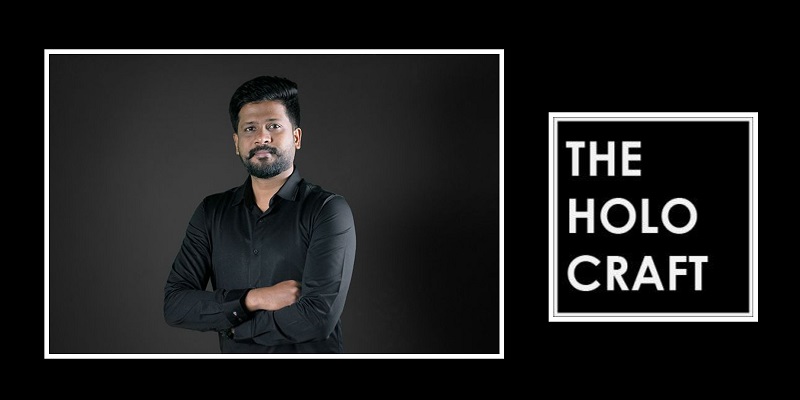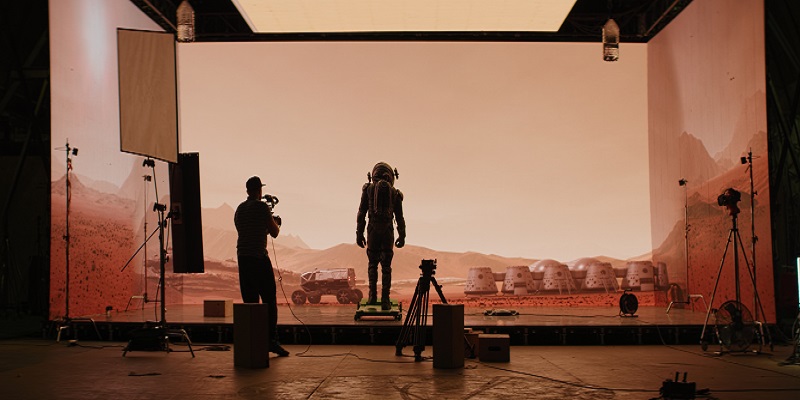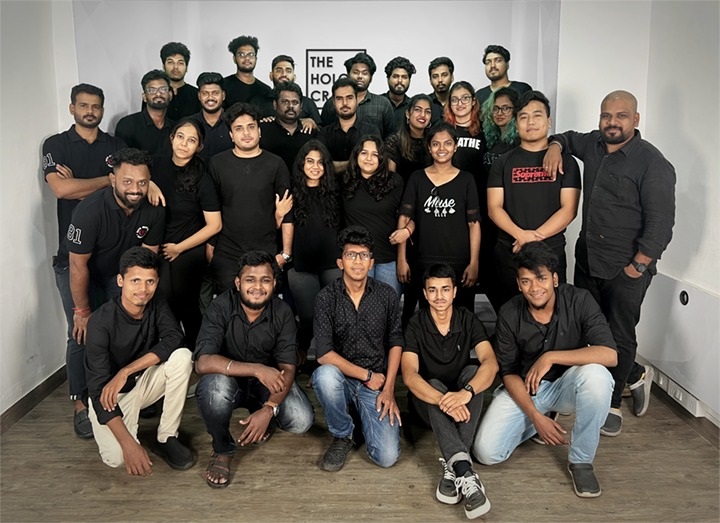
When the world was grappling with a sudden disruption due the covid outbreak, Chennai-based virtual production and real-time animation company Holocraft started its operation. The looming uncertainties had stalled live-action shoots and the entire AVGC industry started exploring hybrid pipelines and other emerging technologies. Holocraft, which forayed into the market in 2019, not only survived those difficult times, but also offered cost-effective camera tracking systems to the industry and is now taking tiny steps towards the world of Metaverse. This new player is working on a large-scale real-time animation film that is most likely to be ready by next year.
In an in depth interview with Animation Xpress, one of the founders Praveen R. Jayachandran touched upon the company’s journey since inception. He also spoke about how they molded the challenges into an opportunity by developing their own in-house technology.
Capitalizing on the industry trend, since its inception, Holocraft has completed 15+ successful projects with 10+ clients. Karu, Holocraft’s real-time animated content, created entirely in Unreal Engine, was named first runner-up in the Unreal Shorts India Program. They have also created well-known projects such as Logam, a real-time animation product, Nestron, an LED in-camera VFX, and Radhe Shyam, a green screen production.
Sharing about the foundation of Holocraft, Jayachandran said, “In our inception days, the global Covid-19 pandemic impacted the theatrical and entertainment industry causing movie theatres and production studios to close temporarily. While the restrictions brought its own challenges with live shoots and large-scale productions disrupted, content creators saw a silver lining in real-time animation and virtual production studios. When we first started out in virtual production in 2019, one of the biggest challenges was finding an efficient and cost-effective camera tracking system. We began researching market solutions as a camera tracker was critical to establish any kind of virtual production pipeline. We discovered that the majority of the solutions available at the time were either too expensive for the scale of our productions or lacked the necessary features or flexibility for the pipeline that we execute in our industry. This compelled us to develop our in-house tracking system, Holotrack.”

Holotrack is a complete made-in-India product that is claimed to provide a more efficient and cost-effective camera tracking system than what is currently available on the market. The company’s USP is pre-visualisation, which combines physical and virtual objects using a set of software tools. Holocraft also offers motion capture, real-time animation, camera tracking hardware and software, and green screen production.
Since 2016, Jayachandran has been using the Unreal game engine to develop arc-viz and VR applications, where they worked diligently to fill the gap between digital (3D) and real-world environments by creating virtual environments. His expertise on real-time technology is the base of this Chennai-based company.
“I was the director of a Dubai-based AR/VR company when I met Sreejith Sreenivas and discussed the idea of further exploring the field’s potential. Technological advances in real-time technology and graphics processing units (GPU) has bolstered game engines such as Unreal Engine’s ability to create photorealistic content, and eventually, in 2019, Virtual Production became a reality for both of us, and we both left our jobs to co-found Holocraft,” he said.
Talking further about virtual production and filmmaking, the founder mentioned, “Real-time production studios are driving the majority of filmmakers. For a filmmaker, the benefits of a real-time game engine include higher image fidelity and increased malleability. Since the entire scene is rendered in real-time, changing angles or actions is much easier than re-rendering frame by frame. Also, real-time virtual production saves both time and money, which is essential in modern cinema. These disruptive changes are also simultaneously shaping the future of the film industry.”
Asked if green screen VP is a preferred option (for Indian filmmakers) compared to LED screens when given proper budget, he said, “When comparing a green screen to an LED-based system, the main difference is that an LED screen enables filmmakers to change sets quickly and it allows for realistic lighting and reflections in a scene. The actors can play their roles naturally with more fluid movement because they’re surrounded by virtual environments instead of blank screens, while the green screen allows actors to perform their roles without being able to see the effects or scenery around them. Visuals are added much later in the post-production process which is time-consuming. Given the Covid-19 scenario, LED production is the most preferred option because it is the most recent and convenient technology. Also, Indian cinema has come a long way, with high-budget films being produced on a regular basis.”
Though virtual production has been a game-changer, it comes along with its own pros and cons.
“Although today’s virtual set technology can be used successfully, even in live productions, several challenges do exist that need to be resolved. As virtual sets aim to unleash the human imagination, producers typically demand greater complexity and realism from them than from real sets. What producers do not understand is that computer-generated scenes have limitations in terms of performance and realism. Another issue is assisting actors in interacting with the virtual set. Actors must be properly oriented to interact with a non-existent virtual environment. Gradually, awareness of the issues is resulting in better coordination; for example, cinematographers who were concerned that their skills were being automated now believe it is for a good reason,” he explained.
Holocraft team believes that the future lies in the intersection of real-time technology and innovative story-telling. The leaders have combined their years of experience crafting immersive real-time experiences and story-telling to create cutting-edge visual and narrative experiences powered by real-time technology.
Holocraft is also exploring the world of the metaverse. But they will be taking carefully measured steps.
“As the metaverse is still in its nascent stage, the possibilities for workspaces on the metaverse are limitless. As a virtual-reality space in which users can interact, shop, play and produce content, the metaverse is evolving into an increasingly vast and rich ecosystem that comprises metaverse gateways, platforms and infrastructures. We also provide a variety of services to enhance the customer experience with identity, social, gaming and economic services. If the metaverse develops like how NFTs have, it could provide a massive growth opportunity not just for us but for other industries as well,” the founder said.
Jayachandran signed off by saying, “Currently, Holocraft is working on a large-scale real-time animation film, which is scheduled to be completed in December 2023. The studio is also working on a music video and an animated documentary, both of which will be released soon.”


